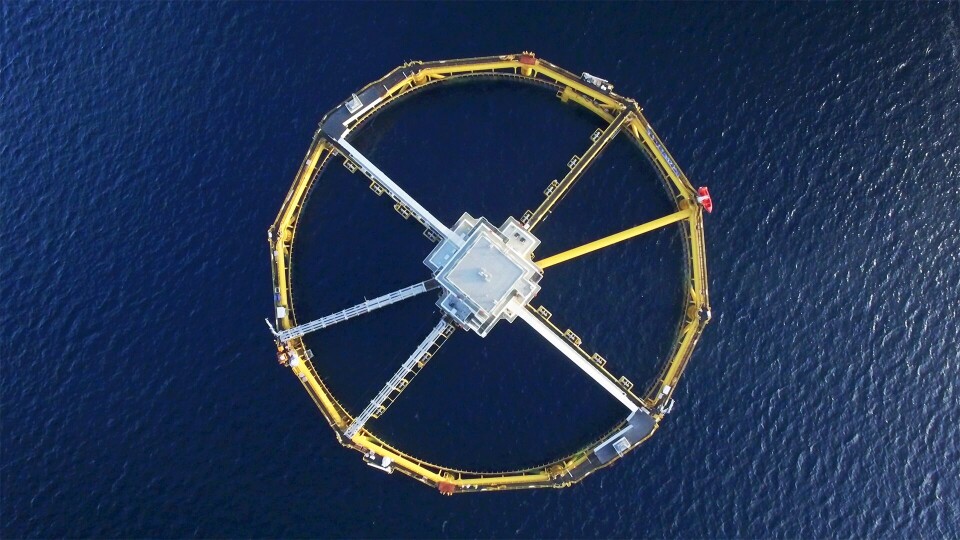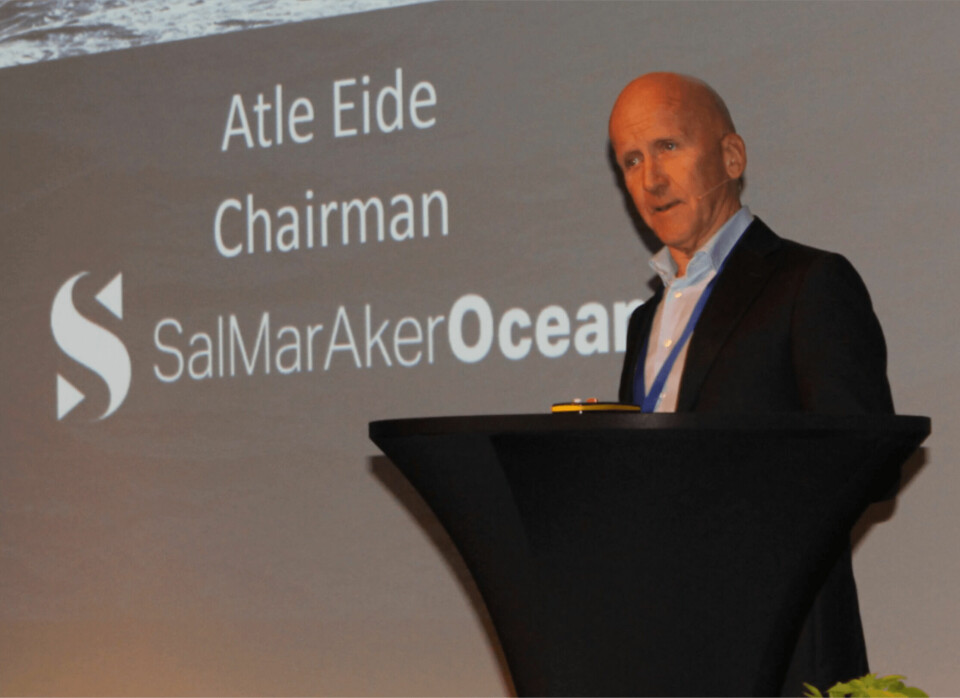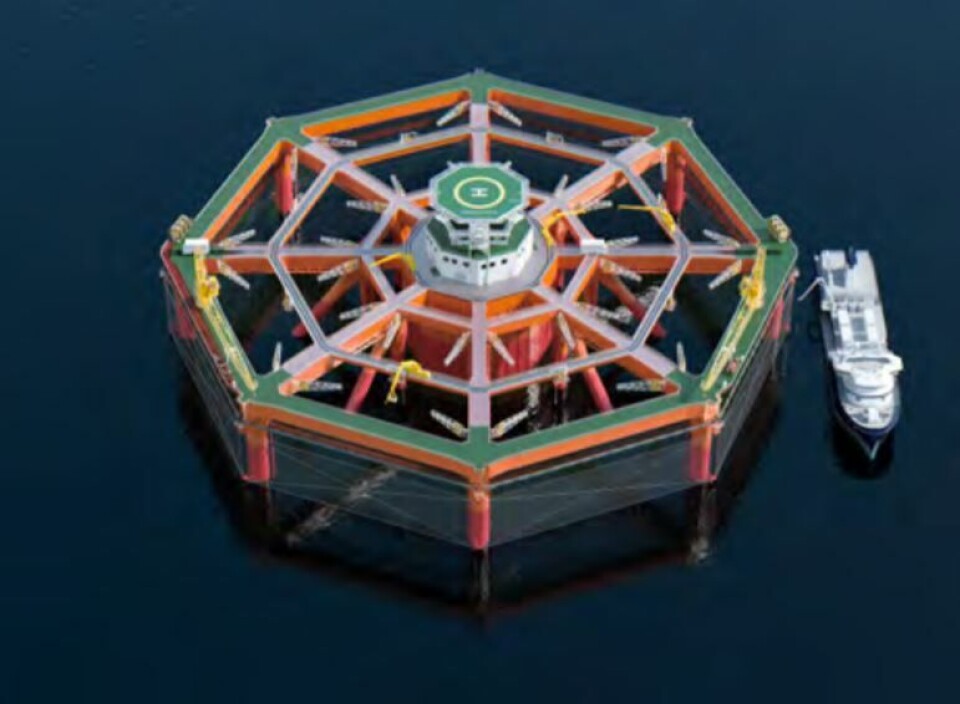
Ocean Farm 1 taken out of use for months for improvement work
Norwegian salmon farmer SalMar has discontinued use of its pioneering Ocean Farm 1 offshore cage until it has been upgraded to ensure, among other things, that it is more secure.
It will go back in the water next autumn once improvements have been completed.
SalMar, which co-owns Scottish Sea Farms, has harvested a total of 10,000 tonnes of salmon in two successful farming cycles in Ocean Farm 1. But Atle Eide, chair of offshore farming subsidiary SalMar Aker Ocean, pointed out that the company had also had two escapes from the cage.
Inspection hatch
In September 2018, around 16,000 salmon were able to swim out of their cage when Ocean Farm 1 tilted after water entered an inspection hatch that had been accidently left open. A few metres of the top of the net were up to 18cms under water for a short period of time, allowing fish to escape.
A second escape, caused by a tear in a net, occurred in August last year.

“We cannot have escapes and therefore the sea cage has been taken out of operation for a period. We take the cost of not producing this period until the new design is in place,” he said.
Eide was speaking at the conference “New aquaculture technology - closed production at sea and aquaculture at sea” in Norway earlier this week.
150,000t offshore
SalMar Aker Ocean is a new company established to facilitate Norwegian engineering giant Aker’s involvement in SalMar’s ambitious plans for semi-offshore and open sea salmon farming. Aker is taking a 33.4% stake in the company, which replaces SalMar’s wholly owned offshore development subsidiary, SalMar Ocean.
SalMar Aker Ocean aims to establish sustainable production of approximately 150,000 tonnes of salmon in offshore and semi-offshore sites by the end of 2030.
Ocean Farm 1 was built in China, but the improvements will be made locally. Future cages are also likely to be built in Norway.
Access to experience
“The upgrade of OF 1 will take place in Norway; either ‘offshore’ where it is located on the Frohavet, or by us pulling it in to Aker Verdal,” Eide told Fish Farming Expert’s Norwegian sister site, Kyst.no.
During his presentation, Eide said SalMar joined forces with Aker so that it could be in the driving seat of offshore farming technology development.
“We contacted Aker because we needed to gain access to their experience in the offshore industry in order to succeed with offshore aquaculture. The collaboration with Aker is important for realising our plans,” he told the conference.
A lot of energy
“There is a lot of energy in the management of the two companies and they are organisations that really want to build industry.”
Eide believes that the potential of offshore aquaculture is almost unlimited.
“But there is a lot to learn,” he pointed out.

Smart Fish Farm
As well as adapting Ocean Farm 1, SalMar Aker Ocean is also developing a much larger cage, the Smart Fish Farm (SSF), capable of operating further offshore and holding 19,000 tonnes of fish. A subsidiary company, Mariculture, is in charge of the project and has been granted eight development permits, the equivalent of just over 6,000 tonnes of biomass, but it still needs permission for a site.
SalMar Ocean (now SalMar Aker Ocean) has applied for permission to produce fish in the SSF at a site around 50 nautical miles off the coast of Trøndelag. This is the first time someone has applied for clearance of a site for aquaculture in the open sea.
“We are ready to build the Mariculture cage next autumn and will start as soon as we get an operating permit,” said Eide.




















































